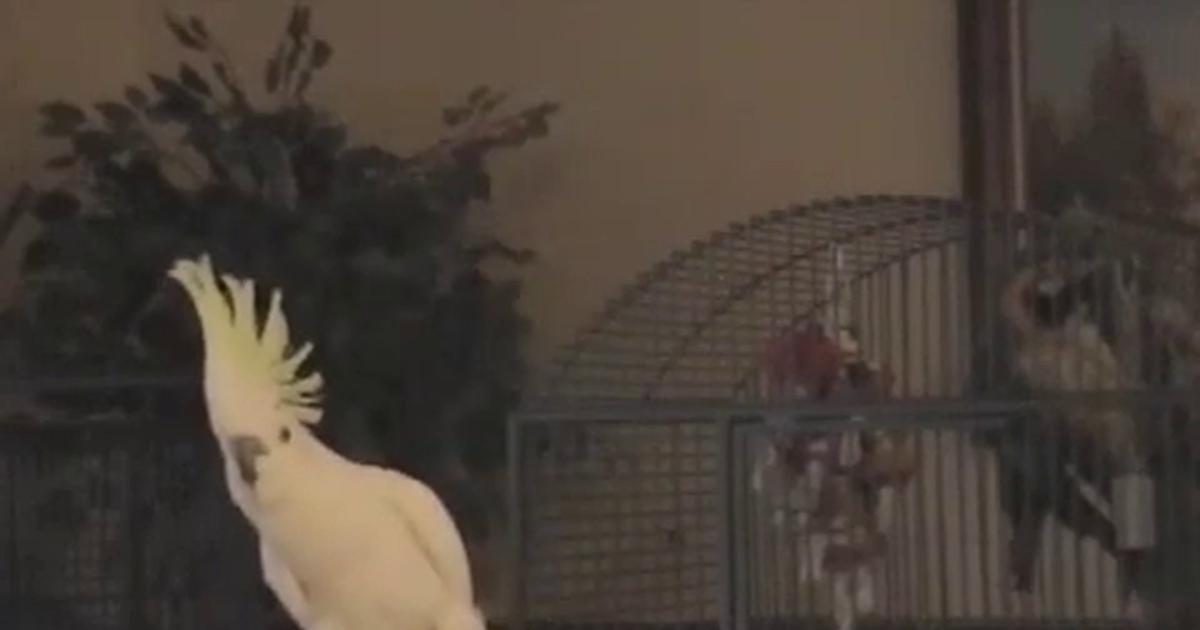In 2007, a sulphur-crested cockatoo became a YouTube sensation: Snowball danced like a god to hits by Queen and Cyndi Lauper.
Lateral movements, swinging of the head, paw that beats the rhythm, the animal took such obvious pleasure in it that, two years later, several American scientific studies were based on its case to affirm that "the spontaneity and the diversity of movements on music are not only human” (study by Aniruddh D. Patel).
The philosopher Vinciane Despret had participated, at the end of the 1990s, in a study on a species of bird, the scaled babblers, which dance in groups.
She had wondered about the way humans interpret this gesture in
La Danse du cratérope écaillé
, a new edition of which was recently published by Éditions La Découverte.
Read alsoClaude Béata, behavioral veterinarian: "Cats have the reputation of being completely autonomous, that's not true"
Be one with each other
In Australian gardens, peacock spiders regularly offer wild choreographies.
The males stake their lives on precise dances, with the deployment of colored tufts and the snapping of their legs.
Enough to vibrate the hairs and pupils of their targets: if the dance is missed, they can be devoured.
In the animal kingdom, when we speak of dance, it is above all a question of nuptial parades, which are fascinating when we know how many human couples are also formed during swaying steps.
“I had studied the parades of great crested grebes: there was a ritualised, very rhythmic dance, males and females holding blades of grass… It is a ballet ritual which prepares the biological synchronization of the birds”, recalls Vinciane Despret.
These birds were able to dance in other circumstances.
They could improvise with the human dancers
Vinciane Despret, philosopher
The philosopher observes that this dance, which makes it possible to become one with the other, breaks down the boundaries between animals and humans.
She talks to us about the choreographer Luc Petton, who created
Light Bird
in 2015 , a show with Manchurian cranes: “It showed that these birds were able to dance in other circumstances.
They could improvise with the human dancers, who had learned to make prompt gestures for them, says Vinciane Despret.
The birds had invented them in turn, to respond to them.
It was an example of a common writing where each had learned the language of the others from a common ground: the dance and the gestures.
Asserting yourself in a group
In
The Babblers Morning Dance
, the video of the dance of the scaled babblers that we find on YouTube, there are five, then seven, then a dozen gray birds to form a line on the rocky ground, they delousing each other, raise a wing, then the other, change places under the chirps.
A ritual that this species of passerine visible in the Arabian Peninsula multiplies at the worst times of the day for it: at dawn and dusk, when predators are difficult to spot.
This ritual unleashes passions among ornithologists.
Amotz Zahavi's theory particularly fascinated Vinciane Despret: for the Israeli scientist, it is indeed a dance, not a game, in which you have to stay in the middle as long as possible to show your courage ( the environment being dangerous if a predator arrives).
“According to Amotz Zahavi, it is a group synchronization dance with a communicative aim, to provoke common emotional or affective states and overcome the feeling of individual vulnerability.
The word “dance” is important, it underlines the ritual, the code, the communication, specifies the philosopher.
These birds say to themselves: “Look, I am willing to take a risk with you.”
The fact of dancing causes them stress and, by overcoming it, they assert themselves collectively and remove the feeling of danger.
»
The fact of dancing causes them stress and, by overcoming it, they assert themselves collectively and remove the feeling of danger.
Vinciane Despret, philosopher
A common language
The frenzied rhythms of the cockatoo or the scaled babblers provoke in the humans who watch them an irrepressible desire to dance.
“When you teach dogs or chimpanzees to dance, there is clumsiness.
But with the birds, which are also the first musicians, we are amazed, we have the impression of being apprentices", underlines Vinciane Despret, who considers that it is not anthropomorphism that should be read in our feelings about dancing animals, but the other way around.
“Anthropomorphism is a way to open up interpretations.
But for dance, we can also see zoomorphism in saying that humans dance.
When we see this cockatoo dancing on Queen, we discover that certain animals are inhabited by rhythms that we thought we had invented.
It's overwhelming to see that music affects our bodies in the same way, that it's irrepressible.
When we see an animal taken by the dance, we find a common language with him, and it is astonishing.









